Our Cultural Connection – See Us Outside, Episode 1
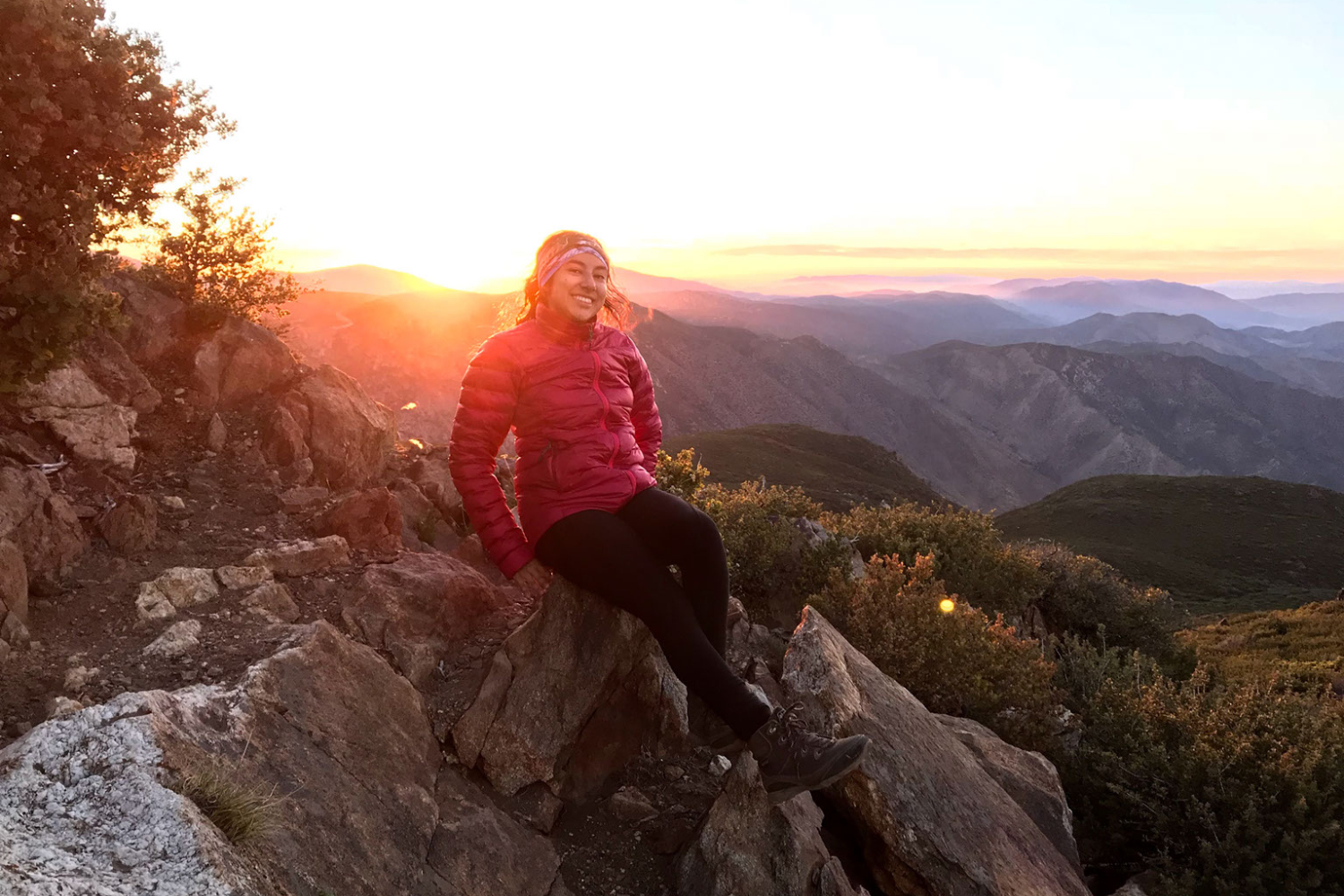
See Us Outside: Episode 1
Our Cultural Connection
We all have our own profound connection to land and water that should be honored and respected, but all too often, dominant narratives of what it means to be an ‘outdoorsperson’ uplifts just one way to be outdoors. In the first episode of “See Us Outside,” Gabaccia talks with leaders from Brown Girl Surf and Charles Roundtree Bloom Project to help affirm the cultural connection to nature that exists for girls and women of color.
Transcript available below the photos and credits!
Banner image by Arlene @arlene_horchata
Find the episode below, on Apple Podcasts, Spotify, Stitcher, or wherever you stream podcasts.
Featured in this episode: Cristal Cisneros, Ki’Amber Thompson, and Mira Manickam-Shirley; Voice memos included in this episode were submitted by Meggy Pyaneeandee and Arlene.
Hosted by Gabaccia Moreno
Music by Joy Ike & Sita via MusicBed
About the series:
This special She Explores miniseries is made in collaboration with The Cairn Project, and made possible by a grant from the Walton Family Foundation.
Host Gabaccia Moreno is our guide in exploring the unique relationships girls and young women of color have with the natural world and outdoor recreation. Through the voices and stories of leaders and participants from diverse outdoor organizations doing the work to help young people of color thrive in the outdoors, this four-part audio miniseries will highlight the joy, connection, and community these girls find in nature, as well as the importance of organizations doing the work to expand outdoor opportunities.
We want to stress that when we say this series highlights women and girls of color, this is inclusive of all cis and trans women and girls, as well as folks of all gender identities who feel comfortable in spaces that center women. That said, for the most part, when we talk about gender we most often do so in terms of those who are socialized as girls and women in a more heteronormative, binary way.
Resources
- Organizations Highlighted
- Featured in this episode:
- Cristal Cisneros
- Ki’Amber Thompson
- Mira Manickam-Shirley
- Voice Memos Featured
- Host: Gabaccia Moreno
All Four Episodes of See Us Outside Are Available Now Wherever You Listen to She Explores
The opening See Us Outside Compilation includes the voices of Marinel De Jesus, Yakuta Poonawalla, Meggy Pyaneeandee, Fernanda Jardim, Arlene, Chi Pham, Denise Meeker and Doreen Wong and includes Spanish, French, Portuguese, Tagalog, Hindi, Vietnamese, Cantonese, and English.
Featured in this episode:
Ki’Amber Thompson, Director of Charles Roundtree Bloom Project
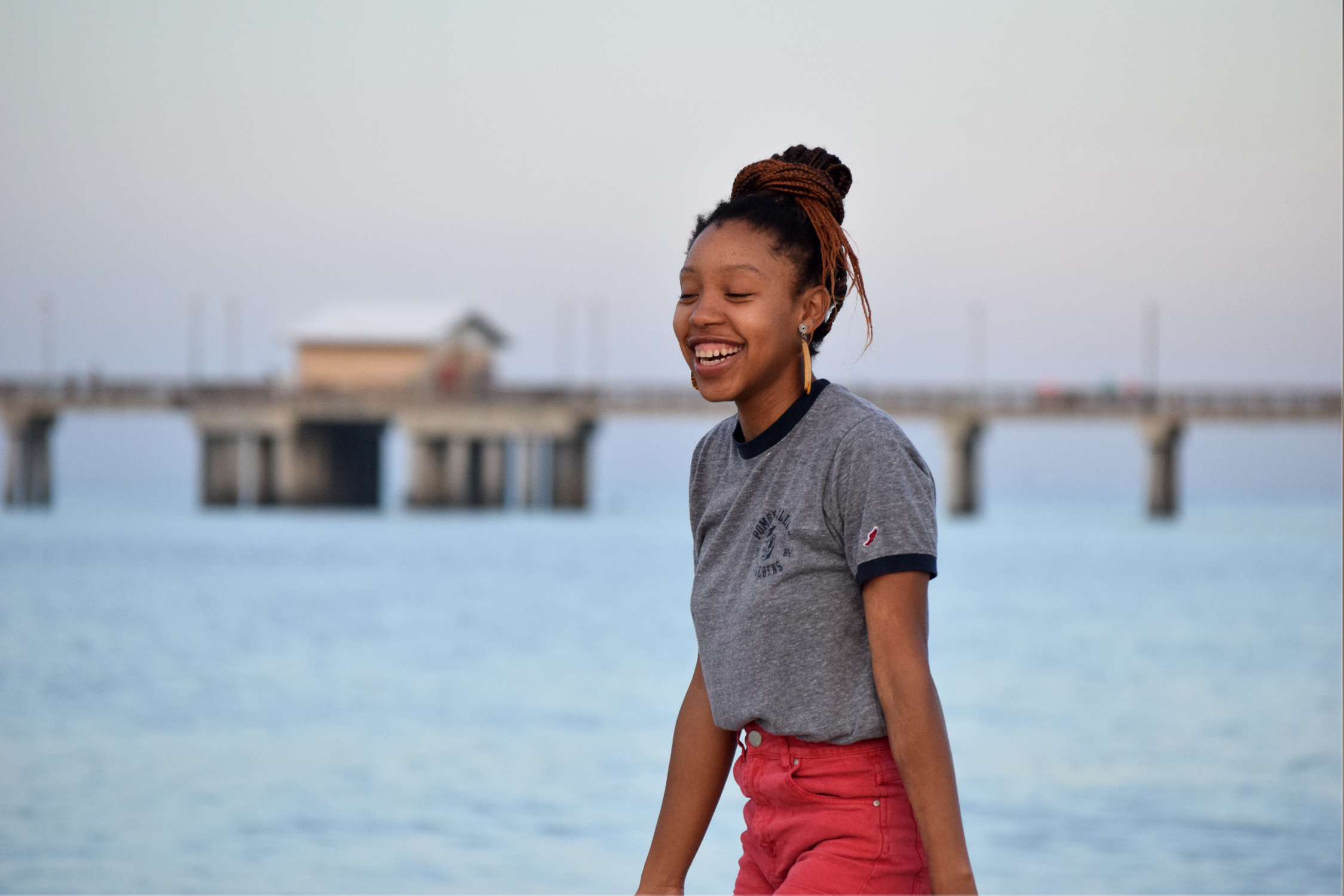
Ki’Amber Thompson, founder & director of the Charles Roundtree Bloom Project
Mira Manickam-Shirley, Executive Director of Brown Girl Surf
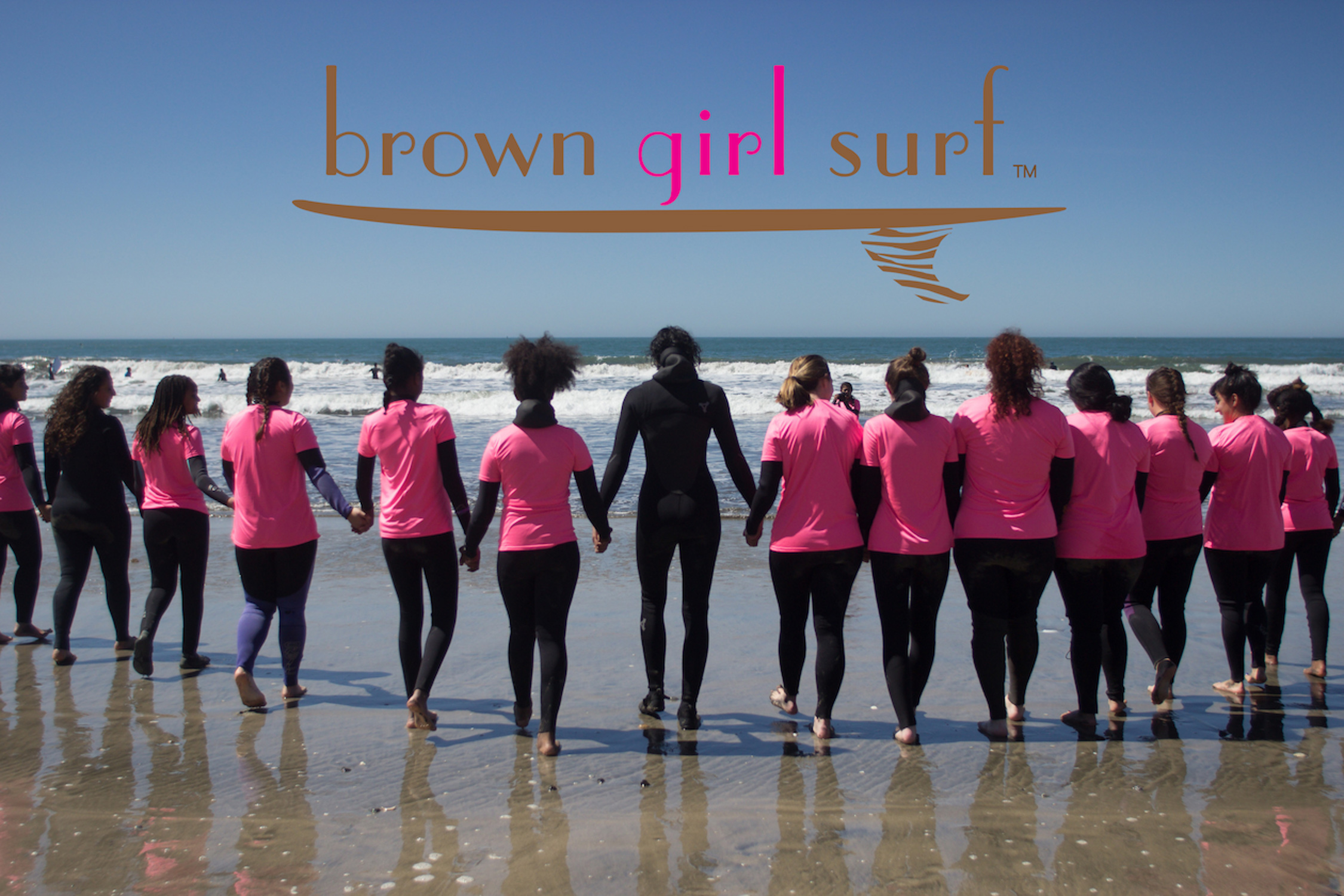
Brown Girl Surf
Cristal Cisneros, Instructor in the Trailblazer’s program at Women’s Wilderness
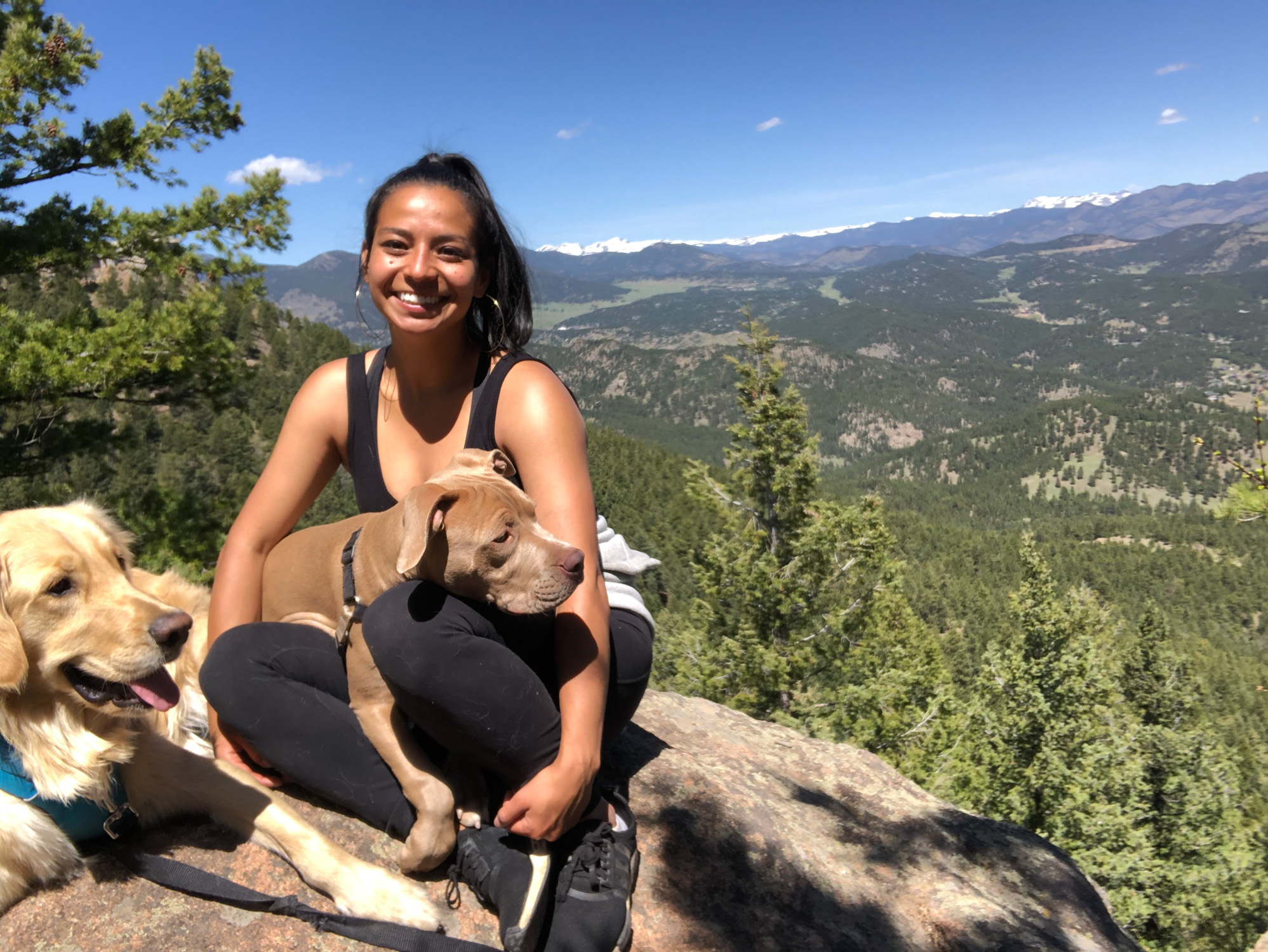
Arlene
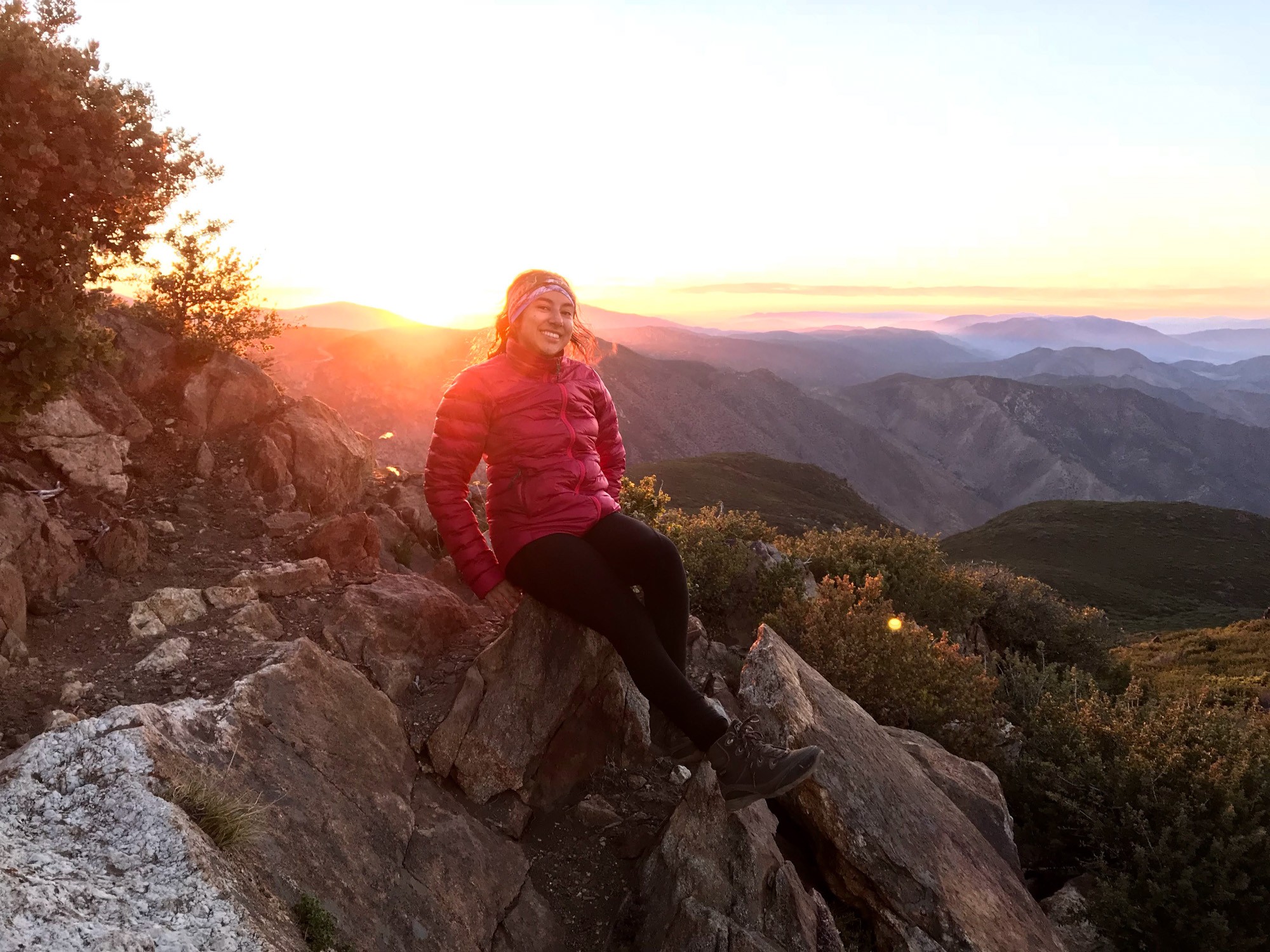
Arlene @Arlene_horchata
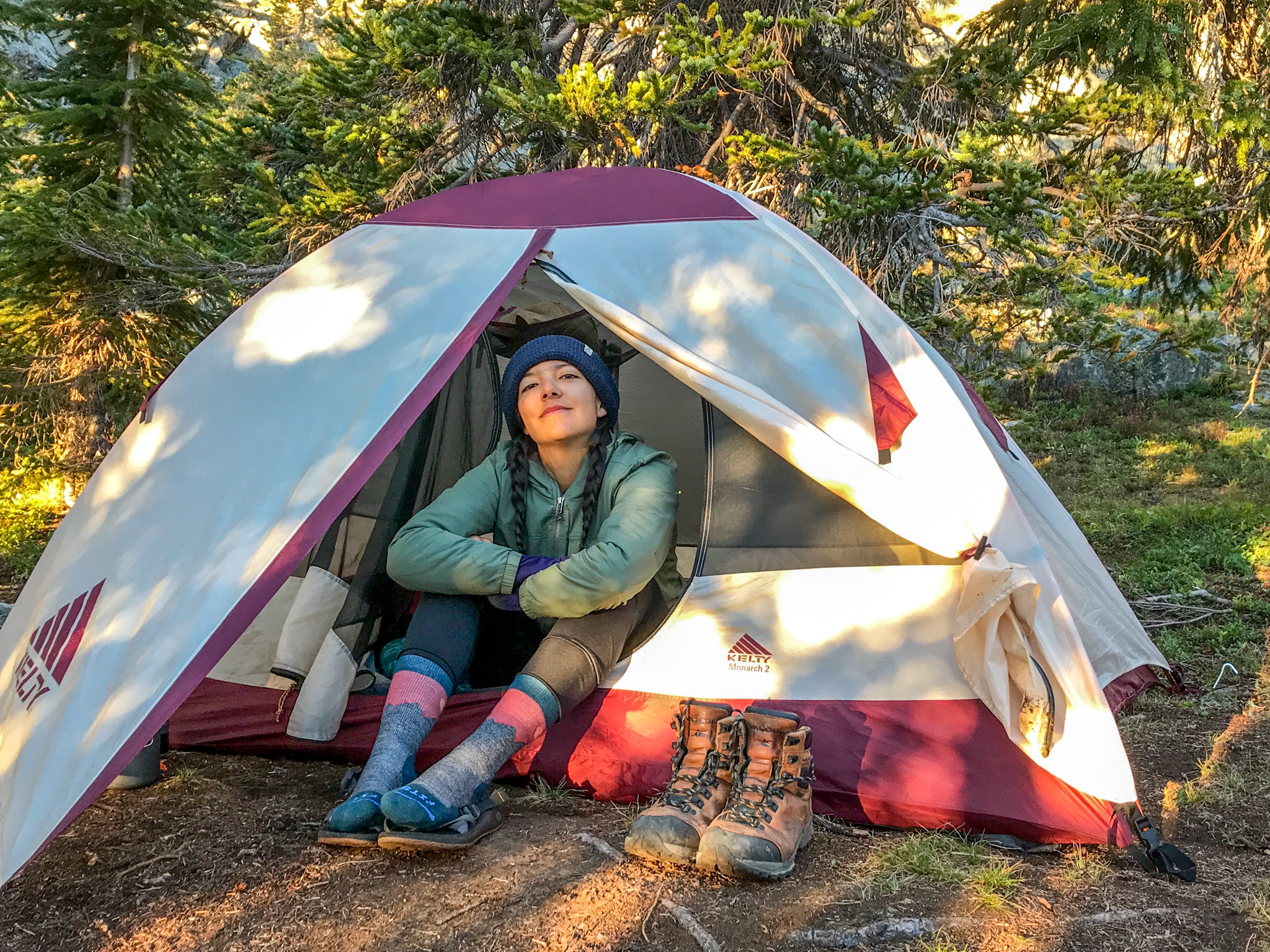
Host Gabaccia Moreno
Enjoy this episode? Rate us on Apple Podcasts or wherever you listen. It’ll help other people find us. You can also share this podcast with a friend. Thank you for your support!
TRANSCRIPT
Note: This transcript was lightly edited and created using a transcription service. As such it may contain spelling errors.
Gabaccia Moreno – Narration:
See Us Outside is a special four-part She Explores mini-series made in collaboration with The Cairn Project with support from the Walton Family Foundation. This is episode 1, our cultural connection.
I’m Gabaccia Moreno, your guide in exploring the unique relationships girls and young women of color have with the outdoors, as well as the forces outside of our control that sometimes keep us from pursuing time in nature.
Through conversations with leaders and instructors from four diverse outdoor organizations breaking down barriers of access to get girls and women of color outside, as well as voice submissions from women of color, this series will highlight the joy, connection, and community these girls and women find in the outdoors.
Before we jump in, I want to take a moment to clarify some important language around gender for the purpose of this series. We talk a lot about women and girls, and organizations who have programs which are geared towards women, girls, and gender expansive youth. We want to stress that when we mention women and girls, this is inclusive of all cis and trans women and girls, as well as folks of all gender identities who feel comfortable in spaces that center women. That said, for the most part, when we talk about gender we most often do so in terms of those who are socialized as girls and women in a more heteronormative, binary way.
Also, while we are fortunate to highlight a racially diverse group of women through the interviews and voice submissions on this series— I want to acknowledge upfront that there is no one way to define the experiences for all women of color in the outdoors, and while we’re not able to highlight the full multitude through this series, I’m hopeful that in listening, you will gain an appreciation for seeing us outside and use this as a departure point to learn more about us.
And with that, on with the show:
As women, we are already at a “gendered” disadvantage. We are told from an early age what we can and cannot do, what we should and should not do, based solely on identifying or being identified as women. The Cairn Project helps to narrow this gap by seeding small but meaningful grants to organizations that expand access to the outdoors for girls and young women.
Adding on to that layer, women of color are always already at a “racial” disadvantage. We are told from an early age what we can and cannot do, what we should and should not do, what we will enjoy or not enjoy to do, based solely on the fact that we are not white women.
Let’s listen to a voice submission from my friend Meggy that helps paint the picture:
Meggy Pyaneeandee:
I remember growing up as a younger being mostly inside at home, I grew up in the suburb of Paris and some would call it the hood. So my mom was always scared that I would get in trouble being outside. She wanted me to go home straight from school. I wasn’t really allowed to play in the park or at least never alone. Whereas my brother were always out playing soccer with random kids. I had a very different experience and in a way I think this is how I created my whole universe in my bedroom, reading books dressing up. And when I think about it, I could have done this outside. Now that I’m an adult, I’m always in front of a computer working. I’m always stuck inside whether it is in my office or in my bedroom because of confinement. And I know how frustrated I am when I look at the window and I see a blue sky, I just want to be out. So I try to enjoy being outside closer to nature. When I’m on holidays, I definitely need to reconnect with some natural environment, especially the sea, because I’m also an Island girl, I’m from a gracious Island, but I also realized that in my daily life, it’s more difficult and it should not. But I guess I don’t have the habits. It’s just not something I grew up doing. And in a way, it’s not part of my culture.
Gabaccia Moreno – Narration:
While nature is an inevitable and crucial part of our ancestral cultures, socio-economic forces such as colonization and urbanization have shifted our families’ relationships with the outdoors. For some of us, like Meggy, that has meant stepping away from nature almost entirely. And for many of us, this ancestral connection is still part of our survival – even if our families and communities wish something different for us. Next we’ll hear from Cristal Cisneros, an alum and instructor with Women’s Wilderness, one of the organizations we’ll be highlighting throughout this series.
Gabaccia Moreno:
How would you describe your relationship with nature as a girl and young woman?
Cristal Cisneros:
Oh, it’s always been incredible, like a soft blanket, um, just experiences in nature with my dad in his garden. Uh, we had a really, probably half an acre plot of land. Um, one of 10. So our family, because we were 12. Um, so we, yeah, so we gardened a lot just for food purposes. We were low income, all of that. So having this garden as a way to nourish us sustainably was something that I grew with. You know, my fondest memories were when my abuelito would come from Mexico and he would take a hat out in the yard and just lay in the sun. And so when he went, yeah, and I would, you know, I was little and I would go lay in the sun with him. So that’s like, Oh, and I’m getting emotional. Um, so just that experience of like having sun in my face brings back such a way, because it’s just, it’s beautiful. It’s, it’s, uh, an experience that has so much emotional connection, physical connection,
Gabaccia Moreno – Narration:
That connection Cristal speaks of, or more specifically, our unique cultural connections with nature, is what this episode is all about. As people of color, we have deep and varied ancestral histories of communing with nature… yet forces outside of our control sometimes keep us from exploring a relationship with the outdoors and enjoying its benefits. As just one example, let’s return to my conversation with Cristal. Because of all the time she spent as a girl lovingly tending to her family garden, Cristal wanted to study biology in school to become a botanist or a park ranger.
Cristal Cisneros:
And it’s funny because my dad would always be like, I don’t want you to go to school so that you can just watch birds for a living. And I’m like, bah, it’s not. So like for him, he thought that, you know, like park ranger, like I’m going to go and watch birds for a living or my mom and my dad asking, like, why did we come to the country for you to sleep outdoors? You know, like you living in a high rise and be a business person, or be a doctor.
Gabaccia Moreno:
For some girls and women of color whose parents immigrated to the United States in search of a “better life,” they didn’t just leave behind a home country. In acclimating to a new way of life, immigrant girls and women are often encouraged, implicitly and explicitly, to leave behind their cultural connection to almost everything. And considering some specific factors such as the exploitative complexion of jobs in agriculture – which are heavily powered by immigrants – connections to nature are often discouraged. But the roots are ingrained in the muscle memory of our families and cultural environments. For this episode, we’re going to hear about the work of two organizations, Charles Roundtree Bloom Project and Brown Girl Surf. Both received grants from The Cairn Project in 2020.
Ki’Amber Thompson:
My name is Ki’Amber Thompson, and I’m the director of the Charles Roundtree Bloom Project.
Gabaccia Moreno – Narration:
Ki’Amber Thompson is both the director and the founder of Charles Roundtree Bloom Project in San Antonio, Texas. The Bloom Project, for short, is an outdoor healing justice program that serves youth. All of these youth have something in common – they have family members who have dealt with incarceration. Ki’Amber launched the organization in November of 2019, but it has its roots in her childhood.
Gabaccia Moreno:
What motivated you to found the Charles Roundtree Bloom Project?
Ki’Amber Thompson:
Yeah, that’s a big question. And one that’s honestly really personal. I grew up in San Antonio, Texas in both on the West and East side of San Antonio. And these are parts of San Antonio that it’s mostly people of color, mostly black and Latinex folks, also communities where like, there’s not a lot of access to, um, like green space. And so I think growing up, you know, in those neighborhoods in San Antonio and, but not necessarily doing things like hiking or like kayaking or going to like any of the like state parks in Texas, however, I did spend a lot of time outdoors just like playing on the streets with my cousins and, and going to like local city parks and my family. We did have like traditions of going to the beach at least once a year, um, which was like a couple hours drive from San Antonio and my great grandma.
Ki’Amber Thompson:
I definitely credit her for like instilling a lot of my love for the outdoors and then also environmental consciousness in a way that I maybe wouldn’t have been able to articulate when I was younger, but now I can see that. Yeah. And she would always love to go to the river, uh, take us to the river and was like big on like reusing things like paper plates, but she washed them, um, and things like that anyway. So I think all those experiences now I can see how they kind of informed me. And then at the same time though, had a lot of really difficult experiences in my childhood with just like having different family members incarcerated, um, and having a lot of negative and sometimes traumatic interactions with police officers. And that also really shaped me.
Gabaccia Moreno – Narration:
Listening to Ki’Amber’s story, I’m struck by how layered her relationship with the outdoors is, as it is with so many of the women of color I talked to for this series. While she didn’t participate in activities that the media so often portrays as synonyms of being an “outdoorsy” person, Ki’Amber and her family went to the beach, she played outside, they were mindful about their consumption. So, Ki’Amber cultivated a relationship with the outdoors as a child, but it was disrupted by the trauma of police violence and family incarceration. When she went to college in California, she re-connected to the outdoors through hiking, camping, and gardening.
Ki’Amber Thompson:
In my experiences in college, I came to find the outdoors as this like place of healing and kind of a refuge. It was quite unexpected. And while in college I had realized that I also had a lot of repressed trauma from my experiences with policing and incarceration that I started to like kind of process and unpack then. So I became aware of just like the healing power of the outdoors.
Gabaccia Moreno – Narration:
AAfter college, Ki’Amber worked a year-long fellowship with The Ocean Conservancy. As it came to a close, she thought about what would come next.
Ki’Amber Thompson:
And so that’s when I came up with the idea for the Bloom Project and the motivation was really just like wanting to give back to my community in San Antonio and really wanting to uplift and support youth of color. Who’ve had similar experiences and might have similar traumas, but don’t really have the support. And so it was combining my experiences with like carceration and policing, and then also my experiences in the outdoors, putting those two things together and wanting to kind of create this space of communal healing for, for those youth to be able to one have a support system, but also to be able to have experiences in the outdoors that they might not be afforded. And then three to also give space for them to also process some of their experiences that they may not get to talk about.
Gabaccia Moreno – Narration:
Healing is a primary focus of the Bloom Project. And the youth who participate in programs don’t just focus on personal and communal healing, they are also afforded the opportunity to start to heal their relationships with nature. For the young Black and Latinx participants, the cultural barriers are often unstated, but they are powerful. The outdoors may be associated with police violence, with being enslaved, with low-paying labor. To help facilitate a connection, Ki’Amber explains that the programs were created with the cultural upbringing of the youth in mind.
Ki’Amber Thompson:
It is a place-based program. And so the curriculum that we provide, it always connects back to San Antonio and the communities that our youth are coming from, the cultural relevance piece is really about creating curriculum with them in mind, who we serve. And we primarily serve low-income youth of color. Most of our participants are girls of color. Um, a lot of them identify as black and Mexican, um, mixed or black and being that that’s like our predominant population that we serve. That’s always at the forefront when we’re thinking about our curriculum and how they’re going to engage with it and what they, how they might connect with it. And so we incorporate things like poetry and music, music videos, when we might be talking about a topic like environmental justice and learning about that broadly, but also in the context of, uh, San Antonio and our communities doing things like that is how we make our programming culturally relevant.
Gabaccia Moreno:
I think that’s so important because sometimes when you’re just learning about something like environmentalism at large is hard to make a connection. If you don’t have someone to guide you to see how this applies to like your neighborhood or your city or your state.
Ki’Amber Thompson:
Yeah. With like one of the sessions that we did, where that, that day we’re learning about water, like issues of like water justice. And, um, we’re taking these, um, very publicized events and issues like, uh, the Flint water crisis, as well as Dakota access pipeline and standing rock. And then also connecting that back to local issues that we have here in San Antonio that affect us, or that might affect us and making those connections, you know, like you said, is really important, so they can have some point of reference right. And make those personal connections as well.
Gabaccia Moreno:
What aspects of the cultural upbringing of the girls of color in your programs, do you think, hold them back from opportunities in the outdoors?
Ki’Amber Thompson:
Hmm. I think that speaking from my experience, um, my upbringing, like there’s this idea that the outdoors or doing outdoor activities is for white people. It’s like a white thing. And I think that, um, that idea that, that is kind of very pervasive, I think can be a barrier. I think also though part of that is like, it’s, it’s a matter of representation of like who we see in, in outdoor spaces. What we see, like, whether it’s on social media or on TV of like, you know, who who’s doing these outdoor things like who’s kayaking or who’s rock climbing that reproduces that idea that this, this is not for me, like as a, as a girl of color, um, as a woman of color, this is not for me. It’s just not a space for me. It’s like for white folks.
Gabaccia Moreno – Narration:
When we talk about culture, we also have to talk about the white-dominated culture we live in. And that culture has a pretty tired narrative around what it means to be “outdoorsy” or an outdoorperson.
Gabaccia Moreno:
Have you found in this year that the way that, that maybe they come in perceiving the outdoors as a space for white people, but then do they progress into considering themselves outdoorsy or are they kind of just creating their own narrative, their own vocabulary around it? What, what are some of your observations on that?
Ki’Amber Thompson:
Yeah. Um, that’s a good question. We’ve, we’ve had explicit conversations like about this, this topic of who, who is the outdoors for, and, and talked explicitly about reclaiming our space as young people of color in the outdoors and, you know, seeing, seeing ourselves as like belonging in the outdoors. And so I don’t think that they necessarily see themselves now even as like outdoorsy, however, at based on like conversations we’ve had and based on like survey feedback, they definitely do see the value even more now in connecting with nature and, and spending time outdoors and, you know, especially spending time outdoors and away from their devices in particular. And so I think they’re able to see themselves more and desire that more and that connection with nature and being out, being outdoors. But I don’t think that they would describe themselves as outdoorsy.
Gabaccia Moreno:
Why do you think that is?
Ki’Amber Thompson:
Maybe the term outdoors-y doesn’t necessarily allow for the tension that still exists with being experiencing the outdoors and being outdoors? And I think the, the girls of color in our program and, you know, even me there, there, there is still like a tension. I think even though, even for me, like, even though I definitely will show up in any outdoor space and feel like I belong in a spacious as much as anyone else, but I don’t even think I consider myself outdoorsy. Maybe that’s just like, not the way that I connect or relate to the outdoors and in nature, it’s honestly just like more of a thing, a spiritual thing for me, but yeah. Yeah. So I don’t know. Maybe the, that term is like limiting in some way and doesn’t allow for it kind of the complexity and the tensions that exist as like people of color in the outdoors.
Gabaccia Moreno:
When you think of outdoorsy, what do you see?
Ki’Amber Thompson:
It’s like someone, someone like climbing a huge mountain peak or something like that’s not always accessible.
Gabaccia Moreno – Narration:
The women in the organizations I talked to shared that they are doing their best facilitating their participants to develop their own organic relationships with nature. They’re following the lead of the girls and young women of color to define those relationships for themselves.
Mira Manickam-Shirley:
If anything, our cultures are rich in points of connection to the outdoors. But I think that the larger, our larger society and the media have taught us about one way of being outdoors, like one way of looking at it. My name is Mira Manickam-Shirley. And I am the executive director and co-founder of Brown Girl Surf.
Gabaccia Moreno – Narration:
Brown Girl Surf’s mission is to build a more diverse and joyful women’s surf culture by increasing access to surfing, cultivating community, amplifying the voices of women of color surfers, and taking care of the earth. And when we think about the fact that the oldest ever found papa he’e nalu or surfboard, belonged to the Hawaian princess Kaneamuna, their mission becomes all the more relevant.
Mira Manickam-Shirley:
We were passionate about surfing that Brown Girl Surf for us surfing is it’s healing, it’s therapy, it’s health, it’s confidence, it’s mindfulness. It’s being a part of something bigger, the ocean in like visceral way. And yet as women of color, we have often found that the way surf culture is portrayed in the media, the way surfing sometimes feels does not always, you know, in terms of the culture and the narratives that are portrayed are not reflective of us and our experiences. So what Brown girl surf does is, you know, we’re building a community and a culture in our own image that reflects us to support each other, to connect to the ocean, provide spaces, to do this and build community that can support each other to do this over time.
Gabaccia Moreno – Narration:
Brown Girl Surf is intentional about building a community and a culture in the image of the participants, because all people have a cultural connection with water.
Mira Manickam-Shirley:
And comes from a different cultural background. And every culture is connected to water. So, you know, whether your people were people, Island, people, farming people in mountain, people in our ancestry, all humans, all human cultures are connected deeply to water. So we all have that to draw on, which is really exciting. And I think it’s also important to note that many of us don’t have the privilege of being directly connected to our ancestral ways that’s been cut off. Um, in some ways through the most obvious example is like through the brutality of enslavement and also just forces of, of colonization, you know, um, not just for women of color, but for, for everyone, every single culture was once indigenous and live in close connection to the earth. And, you know, there have been these interruptions. So there’s this process for every single one of us, of, of reclaiming, right?
Mira Manickam-Shirley:
So of reclaiming that connection and our ancestral connection as human beings to water, to ocean and our individual, you know, cultural, um, connections to the ocean everyone’s path is individual. You know, we don’t prescribe one one way, but I would say like a critical piece that we offer is this embodied connection of being in the water, right. Being in the ocean, feeling in the ocean. So when we have a community surf clinic, that’s a really big emphasis is like the joy, the natural ness that the community, the playfulness, the, the liberation, right. Of being in the ocean and, and we’ve really made space for that. And we find that the ocean does the work for us, right? So, and then we, we do that work in, in this container that we make that is reflective of all our cultures, right? So however we are is a reflection of who’s ever present that day and whatever they’re bringing, we incorporate a lot of different, multiple learning styles, multiple intelligences in our curriculum. We incorporate music, call-in response and rhythm and drumming and mindfulness. And, you know, it’s kind of whoever are the volunteers that day, whoever the instructors are going to be bringing their own, their own traditions. And, you know, like at our year-end celebrations, we, you know, we, we have hula dance, we have hip hop performance, we have traditional Dominican dance, our programming and our community culture is reflective of all the diversity of the individuals in our community.
Gabaccia Moreno:
I feel like that’s, that’s what I need to get started surfing, you know.
Gabaccia Moreno – Narration:
By incorporating the diverse cultures of their participants, Brown Girl Surf invites them in. Because, yes, there are cultural aspects that have also held these girls and women of color back from thinking surfing is for them. Still, those aspects are a product of the society at large, which has made surfing less accessible for people of color. We’ll talk about those more in episode two, Empowerment through Access.
Gabaccia Moreno – Narration:
Before we wrap up, I want to share a voice memo submission from Arlene, which brings this conversation full circle.
Arlene:
Well, I wish someone would have told me when I was growing up about spending time outdoors is that spending time outdoors can look different for everyone, and it can look like something different for you than for me. And it doesn’t necessarily mean that you have to go and climb Mount Everest, or even do like a 15 mile hike in the forest. It can be you going to the park with your family and doing a barbecue, putting your hammock up in your neighborhood and just chilling between two trees or even you walking around your neighborhood and finding little small flowers that can also be considered outdoor or something. As little as that, when I was younger, I always thought that I want to climb that mountain over there. Like, you know, I want to go and go to the forest drive far, because that’s what I saw online people, hiking mountains, or hiking, the grand Canyon going down to the Colorado river and camping down there.
Arlene:
And I thought, when I grew up and I get a car, I’m going to go far away and I’m going to go to the real outdoors. I just did quotations. You can’t see that. But now that I’m looking back, I was truly outdoors. Whenever I was spending time outside, like when I was exploring my godparents house in the backyard with my cousins playing around, pretending we were like digging up crystals in the backyard, or even when I was hiking around the observatory around Griffith park, if you’re familiar, you know, and then even me hanging out with my neighbors outside, like playing around with the neighborhood kids until the sun came down, you know, things like that, like that was spending time outdoors. I just wished someone would have told me that anything that I was doing or anything that say that I considered spending time outdoors was spending time outdoors.
Gabaccia Moreno – Narration:
Before we wrap up, I want to share a voice memo submission from Arlene, which brings this conversation full circle.
Feeling deeply inspired by all the voices of this episode, I have a few words for all the Black, Indigenous, and Women of Color who are listening.
You, me,
We can
and
deserve
To be seen out there
To climb the smallest and highest walls
To summit 14ers
To not summit anything
To run long and short trails
To walk around our neighborhoods
To have nearby green spaces
To have opportunities to pursue outdoor careers
To have access to our public lands
To grow our foods
To catch our foods
To love and care for and relate to nature in our own ancestral and modern ways
To be outside, however we want.
This was Episode 1 of See Us Outside, a four-part She Explores miniseries made in collaboration with The Cairn Project and made possible with a grant by the Walton Family Foundation. All four parts are available in your feed now. Learn more about The Cairn Project and their work to make outdoor experiences more accessible for girls and young women, by heading to their website at cairnproject.org.
Be the first to comment